Info | Pressure Injury Categories / Classification
Learn about the different categories of pressure injuries and their definitions.
Table of Contents
Category I
Skin redness that does not disappear when pressure is applied, intact skin. Intact skin with redness in a clearly defined area, usually above a bone protuberance, that does not reduce on pressure. Dark, pigmented skin might not show this sign, though the colour is different from the surrounding areas of skin. The area may be painful, solid or soft, and warmer or colder than other areas of skin. Category I pressure injuries may be difficult to detect in people with dark skin tones.
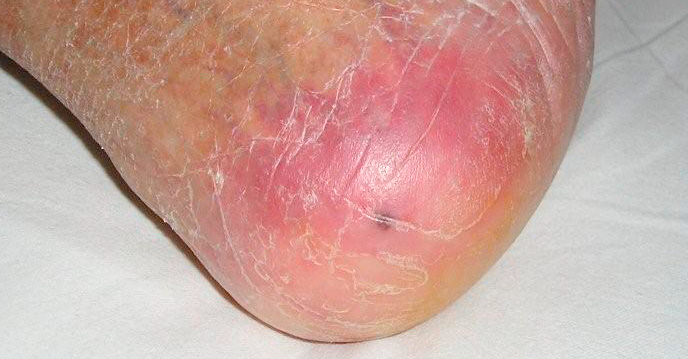
Category II
Partial skin injury, small injury or blister through the epidermis and corium. Partial skin damage that appears as a superficial open injury with a pinkish-red wound bed without fibrin slough. It may also be an intact or open/ruptured serum-filled or blood-filled blister. Appears as a shiny or dry superficial injury without fibrin slough or superficial haematoma.

Category III
Full skin injury, through the epidermis and corium down into the fatty tissue, no involvement of the muscles/joints. The depth can vary depending on the anatomical location. Full skin damage. Subcutaneous fat is visible, though not bone, tendon or muscle. Fibrin slough may be visible, though without obscuring the depth of the injury. May include undermining and tunnelling. The depth of a Category III injury may vary depending on its anatomical location. The bridge of the nose, ears, back of the head and ankles do not have any subcutaneous fatty tissue and Category III pressure injuries may be superficial at these locations. In contrast, areas of significant subcutaneous fatty tissue can develop extremely deep Category III pressure injuries. Bone/tendon is not visible or palpable.
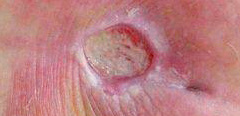
Category IV
Deep. full skin injury, through all epidermal layers, involves muscles or tendons. The depth can vary depending on the anatomical location. Deep full-tissue damage involving bone, tendon or muscle.
There may be visible fibrin or necrosis. There is often undermining and tunnelling. The depth of Category IV pressure injuries varies depending on anatomical location. For example, there is no subcutaneous fatty tissue at the bridge of the nose, ears, back of the head or ankles, and injuries at these locations may be superficial. Category/grade IV pressure injuries may involve muscles and supporting structures (e.g. fascia, tendons or joint capsules), which means that osteomyelitis and osteitis may occur. Exposed bone and muscle is visible or directly palpable. Black necrosis is assessed as category/grade 4 even if the skin is intact, as may be the case with the heels, for example.
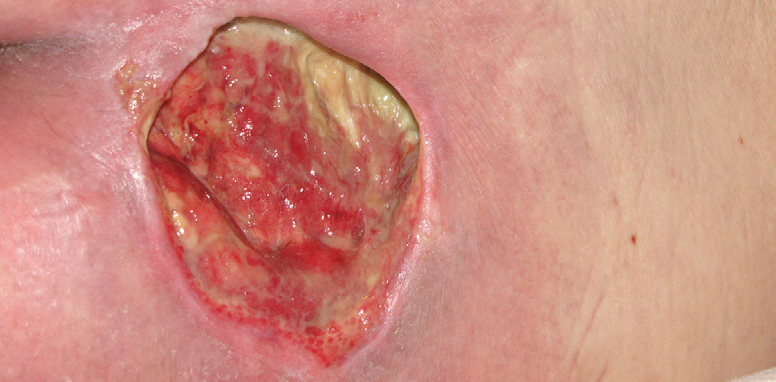
Unstageable pressure injury: depth unknown
Full skin injury where the bottom of the injury is covered by dead tissue. The depth cannot be determined until an adequate amount of necrotic tissue and/or fibrin can be removed. The classification system devised by EPUAP/NPUAP and PPPIA also describes the following: Unstageable: Depth Unknown and Suspected Deep Tissue Injury: Depth Unknown for pressure ulcers that cannot yet be classified
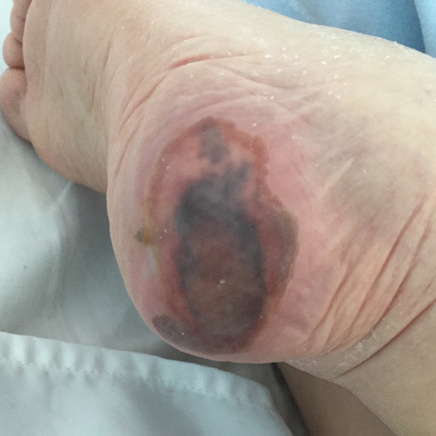
Suspected deep tissue injury: depth unknown.
Purple or maroon localised area with discoloured intact skin or blood-filled blister caused by pressure and/or shear resulting in damage to underlying tissue.
IAD, Incontinence Associated Dematitis
Always caused by incontinence (urinary and/or faecal). IAD often occurs in skin folds as superficial damage. The edges of the wounds are often diffuse and irregular.
IAD causes disruption of the skin’s protective barrier and leads to inflammation. Healthy skin is acidic, with a pH between 4 and 6. Urine and faeces have a caustic effect on the skin, causing irritation and superficial abrasions in the form of incontinence dermatitis. Skin exposed to urine/faeces becomes overhydrated, causing swelling of the outermost layer of the skin (the stratum corneum) that leads to damage and maceration. IAD leads to an increased risk of the occurrence of pressure sores, particularly if both urinary and faecal incontinence are present(22).
Pressure ulcers and IAD (Incontinence-Associated Dermatitis) can often be seen as a combination, and the causes can be difficult to assess. Always make sure of the diagnosis before treatment by relieving the pressure or reducing the risk of damage due to incontinence.
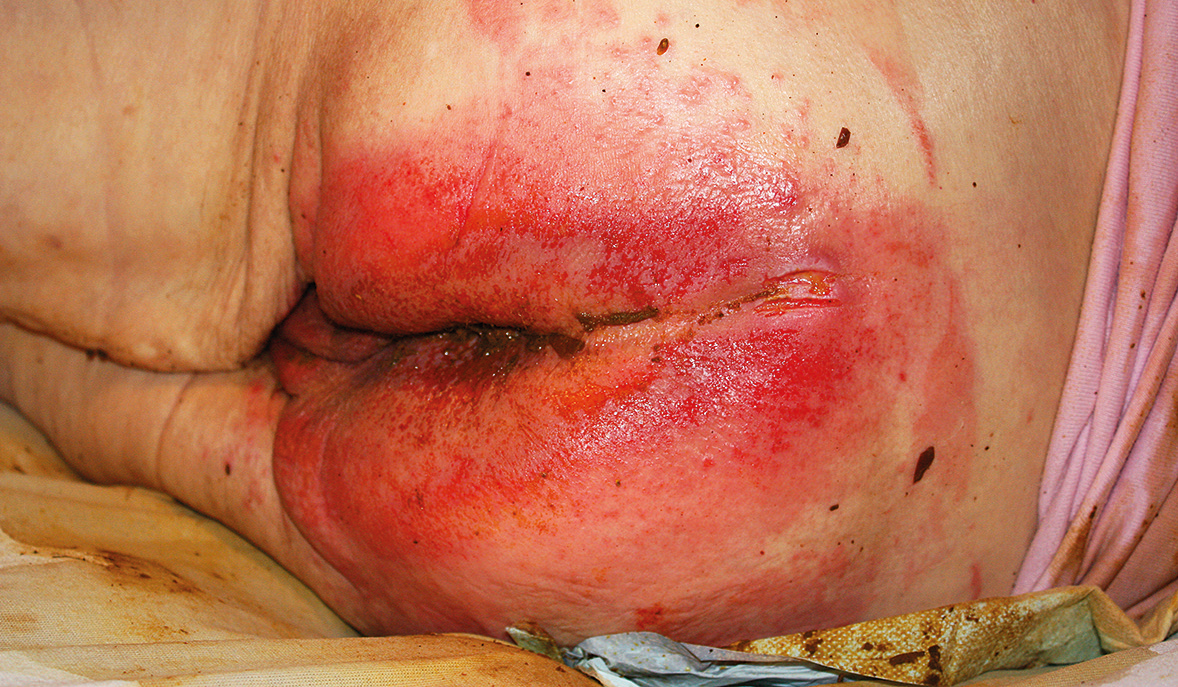
Beeckman D et al. Proceedings of the Global IAD Expert Panel. Incontinence-associated dermatitis: moving prevention forward. Wounds International 2015.